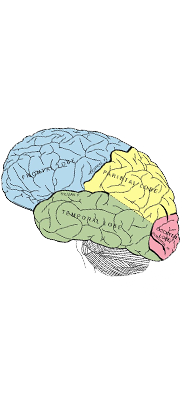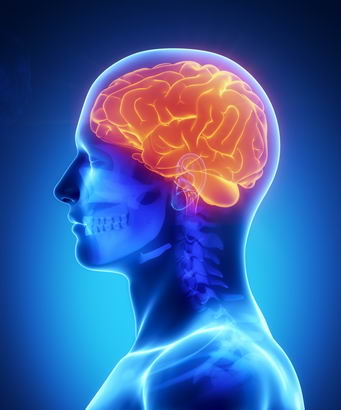The majority of brain growth and development takes place after birth, especially in the higher brain regions
involved in regulating emotions, language, and abstract thought...
Brain development, or learning, is actually the process of creating, strengthening, and discarding connections among the neurons
[nerve cells]; these connections are called synapses. Synapses organize the brain by forming pathways that connect the parts
of the brain governing everything we do from breathing and sleeping to thinking
and feeling.
Child Welfare Information Gateway, 2009
A common claim...is that the developing brain is plastic. This means that during development the brain
is capable of reorganizing patterns and systems of connections in ways that the mature brain cannot.
Stiles, 2000
Researchers use the term plasticity to describe the brain's ability to change in response to repeated
stimulation...brain plasticity is what allows us to keep learning into adulthood and throughout our lives.
Child Welfare Information Gateway, 2009
The plasticity of the developing brain in childhood is thought to account for some of the previously identified 'sensitive periods' for learning.
For example, up to seven years of age, the auditory area in the brain has 'maximal plasticity'. This means there is an upper age limit for fitting cochlear implants for early deafness.
In the case of children who have suffered brain damage, the brain's ability to repair itself is greater than in adults. Repair following brain injury has been demonstrated especially in vision, hearing, movement, and language (Rapoport and Gogtay, 2008).
Researchers believe that there are sensitive periods for development of certain capabilities. These refer
to windows of time in the developmental process when certain parts of the brain may be most susceptible to particular experiences...
But we know that, if certain synapses and neuronal pathways are not repeatedly activated, they may be discarded...
Child Welfare Information Gateway, 2009
At present, our knowledge of sensitive periods for human development is quite limited and is restricted
to basic perceptual functioning.
Howard-Jones, 2010

Neuroconstructivism [is] a new framework for understanding and explaining cognitive development...[i]t
follows the Piagetian constructivist notion of pro-active interactions between the individual and the environment.
Westermann et al, 2010
Neuroconstructivism encourages a focus on development as a process, instead of 'static snapshots of behaviour at different ages'.
It integrates the genetic development of the brain at all its different levels (eg cell, neural structures, brain, body) with its immediate environment (eg adjacent cells at cell level) and behaviour at those levels. It proposes an interactive and continuously transformative relationship between them (Westermann et al, 2010).

These interactions constrain child development in different ways and determine development pathways for typically developing
and atypically
developing children.
Rather than seeing an aspect of disability (eg Theory of Mind in autism) as the result of specific damage, neuroconstructivism presents it as a result of holistic adaptation to atypical constraints during development (Westermann et al, 2010).

Child Welfare Information Gateway (2009) Understanding the effects of maltreatment on brain development, Washington, DC: US Department of Health and Human Services [accessed: 12.1.12].
Howard-Jones, P. (2010) Introducing Neuroeducational Research: Neuroscience, education and the brain from contexts to practice, London: Routledge.
Rapoport, J.L. and Gogtay, J. (2008) Brain neuroplasticity in healthy, hyperactive and
psychotic children: insights from neuroimaging, Neuropsychopharmacology, 33, 181-197.
Stiles, J. (2000) Neural plasticity and cognitive development, Developmental Neuropsychology, 18 (2), 237-272.
Westermann, G., Thomas, M.S.C. and Karmiloff-Smith, A. (2010) Neuroconstructivism , in: Goswami, U. (ed.) The Handbook of Cognitive Development (2nd edition), Oxford: Blackwell.